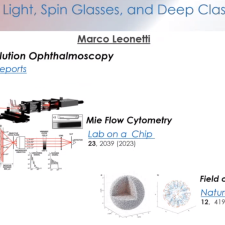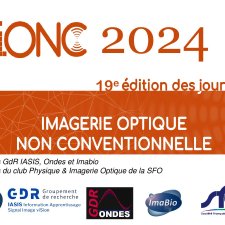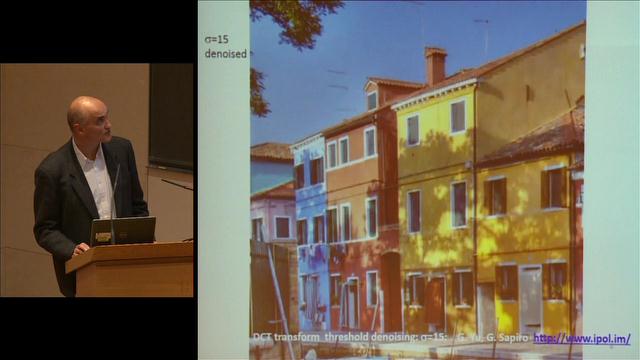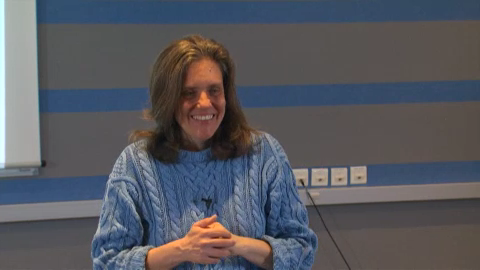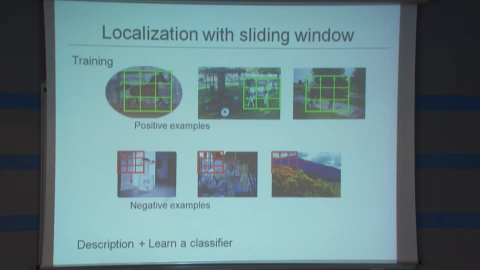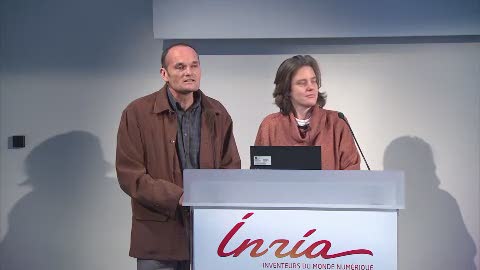Notice
Opponency revisited
- document 1 document 2 document 3
- niveau 1 niveau 2 niveau 3
Descriptif
According to the efficient coding hypothesis, the goal of the visual system should be to encode the information presented to the retina with as little redundancy as possible. From a signal processing point of view, the first step in removing redundancy is de-correlation, which removes the second order dependencies in the signal. This principle was explored in the context of trichromatic vision by Buchsbaum and Gottschalk (1) and later Ruderman et al. (2) who found that linear de-correlation of the LMS cone responses matches the opponent color coding in the human visual system.
And yet, there is comparatively little research in image processing and computer vision that explicitly model and incorporate color opponency into solving imaging tasks. A common perception is that “colors” are redundant and/or too correlated to be of any interest, or that they are too complex to deal with. Within deep learning frameworks, color features are rarely considered.
In this talk, I will illustrate with several examples of our research, such as on saliency and super-pixels, that considering opponent colors can significantly improve image processing and computer vision tasks not only in image enhancement but also image segmentation, image ranking, etc. We have in addition extended the concept of “color opponency” to include near-infrared. And we show that these de-correlation concepts also apply to deep learning models in rather interesting ways.
(1) Trichromacy, opponent colours coding and optimum colour information transmission in the retina (Gershon Buchsbaum and A. Gottschalk)
(2) Statistics of cone responses to natural images: implications for visual coding (Daniel L. Ruderman, Thomas W. Cronin, and Chuan-Chin Chiao)
Sur le même thème
-
IMOTEP - IMagerie infra-rOuge pour le suivi de la circulaTion de l’Eau impliquée dans la dégradatio…
RousselErwanPrésenté par Erwan Roussel (GEOLAB), le projet IMOTEP proposait de développer un outil d'imagerie infra-rouge pour le suivi de la circulation de l’eau impliquée dans la dégradation du patrimoine bâti.
-
Memory, Light, Spin Glasses, and Deep Classification
LeonettiMarcoMarco Leonetti livre une présentation de haut niveau, à la fois riche et inspirante à l'interface de l'apprentissage machine, de la physique statistique et de l'optique ondulatoire en milieu diffusant
-
Présentation Journées Imagerie Optique Non Conventionnelle (JIONC)
VerrierNicolasFontbonneAliceDucrosNicolasJournées visant à réunir des chercheurs, ingénieurs, académiques ou industriels afin d'échanger sur les plus récents développements de systèmes ou de traitements pour l'imagerie non-conventionnelle.
-
Knowledge transfer and human-machine collaboration for training object class detector
FerrariVittorioObject class detection is a central area of computer vision. It requires recognizing and localizing all objects of predefined set of classes in an image. Detectors are usually trained under
-
Safety Verification of Deep Neural Networks
KwiatkowskaMartaDeep neural networks have achieved impressive experimental results in image classification, but can surprisingly be unstable with respect to adversarial perturbations, that is, minimal changes to
-
Visual Reconstruction and Image-Based Rendering
SzeliskiRichardThe reconstruction of 3D scenes and their appearance from imagery is one of the longest-standing problems in computer vision. Originally developed to support robotics and artificial intelligence
-
Du traitement numérique des images et de la vision par ordinateur à la neuro-imagerie : un voyage d…
DericheRachidRachid Deriche donne une rapide vue d'ensemble de ses travaux de recherche, depuis ses débuts, en traitement et analyse d'image, sur l'extraction de contours en particulier, puis en théorie et
-
Comment améliorer la qualité des images ?
Blanc-FéraudLaureOn s'interesse ici à des détails inaccessibles dans l'image, parce que le détecteur est trop loin de la scène que l'on cherche à imager, comme par exemple en imagerie satellitaire pour l'observation
-
Le débruitage d'images à travers les âges (A perspective on image denoising)
MorelJean-MichelLe débruitage de l'image est un problème qui a fait couler beaucoup d'encre, un problème a priori presque impossible. Jean-Michel Morel présente les quelques étapes et formules clés qui permettent de
-
Interprétation de contenus d'images (Visual object recognition) : 1ère partie
SchmidCordeliaDans la première partie de ce cours nous introduisons des descripteurs d'image robustes et invariants ainsi que leur application à la recherche d’images similaires. Nous expliquons ensuite comment
-
Interprétation de contenus d'images (Visual object recognition) : 2eme partie
SchmidCordeliaDans la première partie de ce cours nous introduisons des descripteurs d'image robustes et invariants ainsi que leur application à la recherche d’images similaires. Nous expliquons ensuite comment
-
Action recognition from video: some recent results
SchmidCordeliaWhile recognition in still images has received a lot of attention over the past years, recognition in videos is just emerging. In this talk I will present some recent results. Bags of features have



